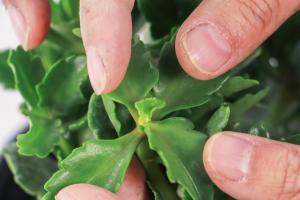Introduction
Planting fruit trees in your backyard is an excellent way to provide fresh fruits for your family while also enhancing the beauty of your landscape. However, choosing the right fruit tree can be overwhelming, especially if you're new to gardening. Different fruit trees require different levels of care, and some may not do well in your region. In this article, we will provide you with some tips to help you choose the best fruit tree to plant in your backyard.
Consider Climate and Growing Conditions
Before selecting a fruit tree to plant in your backyard, you should consider your climate and growing conditions. Different fruit trees require specific conditions to grow and thrive. For instance, some fruit trees perform best in warm climates, while others do well in cooler regions. Additionally, some fruit trees prefer a particular type of soil, while others can tolerate a broad range of soil types.
Choose the Right Type of Fruit Tree
The type of fruit tree you choose will depend on your preferences, growing conditions, and your climate. There are many types of fruit trees available, ranging from apples, pears, peaches, cherries, and plums, to more exotic fruits such as figs, lemons, oranges, and avocados.
If you want to grow fruit trees in colder regions, consider apple, pear, and cherry trees. These trees are hardy, do well in cooler temperatures, and offer high-quality fruits. However, if you live in a warm climate, you can opt for citrus fruits or tropical fruits such as guava or papaya.
Consider Tree Size
The size of your yard and the space you have available will also influence the type of fruit tree you choose. If you have limited space, consider dwarf or semi-dwarf fruit trees. These trees are smaller in size, making them ideal for small backyards.
If you have ample space, you can plant standard fruit trees, which tend to grow larger and produce more fruits. However, keep in mind that you'll need to provide adequate space between the trees to allow for proper growth.
Maintenance Requirements
Different fruit trees have varying maintenance requirements. Some fruit trees require frequent pruning, while others require little to no pruning. Additionally, some fruit trees are more susceptible to diseases and pests, requiring more care and attention.
Before planting a fruit tree in your backyard, research its maintenance requirements. Choose a tree that is easy to care for and can thrive in your region.
Conclusion
Choosing the best fruit tree to plant in your backyard is essential for a bountiful harvest and a beautiful landscape. Consider your climate, growing conditions, and maintenance requirements when selecting a fruit tree. With proper care and attention, your fruit tree will provide you with fresh and delicious fruits for years to come.

 how many times do yo...
how many times do yo... how many planted tre...
how many planted tre... how many pine trees ...
how many pine trees ... how many pecan trees...
how many pecan trees... how many plants comp...
how many plants comp... how many plants can ...
how many plants can ... how many plants and ...
how many plants and ... how many pepper plan...
how many pepper plan...






























